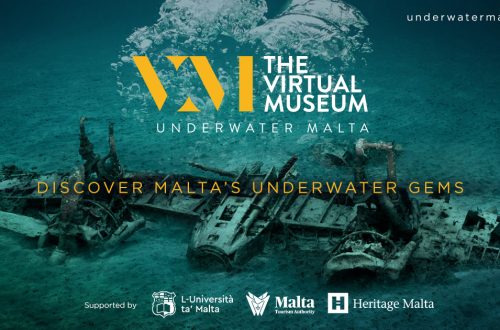
The Dr Peter J Shield Collection: an invite down memory lane (Valletta, Malta)
One year after acquiring a photography collection from Dr Shield, Heritage Malta engaged with its audience, during the first lockdown, by regularly sharing some of these pictures and involving the general public, inviting them to share via email any information they might have about them.
Most pictures were from the late 1950’s and showing all sorts of local subjects. Leveraging nostalgia in such a delicate period, while raising awareness about the recent past and making the audience feel part, feeling considered within the historical research process is an approach worth to be observed and further considered in its implications.
Background
Dr Peter J. Shield is a retired archaeologist.award-winning photographer and author. He worked for Associated Press, for the Maltese Government Information Department and for the Times of Malta under the direction of the co-founder Mabel Strickland.
Heritage Malta acquired from him a donation of about 350 negatives of photographs in August 2019 as addition to the National Collection. All photos were shot by Dr Shield in Malta during the late 1950’s and they cover several local themes, odd historical moments, military operations, village squares and streets, picturesque landscapes and people.
In April 2020, in the early days of the first lockdown in Malta, due to the global pandemic, the DIgitisation Unit of Heritage Malta launched an online initiative to collect information about the subjects of the pictures included in the collection from the general public.
For several weeks, every Thursday, Heritage Malta selected a small group of photos relating to a particular theme (for instance, Mother’s Day). Besides engaging with the audience on different digital channels, leveraging sentiments such as nostalgia, which was even more powerful due to the ongoing lockdown at that moment, the agency vividly encouraged the public to engage with these photos and share any possible information they might have about them.
Behind the appearance of a simple Sunday walk on the promenade, these photos may still contain material waiting to be studied.
All the pictures available on Heritage Malta’s website were also paired with Google Map Views, which was an interesting addition to immediately compare the past scenario, where known, with the present one.
The initiative further exploited the work that the Digitisation Unit had to carry out after acquiring the collection, and required minimal resources to make it accessible to the general public and create a dialogue with the latter. A simple email address was provided for the public to send over any information they might think useful. Even this aspect, economical sustainability assumes much more importance during the times of pandemic, when most if not all sources of revenue for the agency were at a complete standstill.
Description
Dr Peter J. Shield is a retired archaeologist.award-winning photographer and author. He worked for Associated Press, for the Maltese Government Information Department and for the Times of Malta under the direction of the co-founder Mabel Strickland.
Heritage Malta acquired from him a donation of about 350 negatives of photographs in August 2019 as addition to the National Collection. All photos were shot by Dr Shield in Malta during the late 1950’s and they cover several local themes, odd historical moments, military operations, village squares and streets, picturesque landscapes and people.
In April 2020, in the early days of the first lockdown in Malta, due to the global pandemic, the DIgitisation Unit of Heritage Malta launched an online initiative to collect information about the subjects of the pictures included in the collection from the general public.
For several weeks, every Thursday, Heritage Malta selected a small group of photos relating to a particular theme (for instance, Mother’s Day). Besides engaging with the audience on different digital channels, leveraging sentiments such as nostalgia, which was even more powerful due to the ongoing lockdown at that moment, the agency vividly encouraged the public to engage with these photos and share any possible information they might have about them.
Behind the appearance of a simple Sunday walk on the promenade, these photos may still contain material waiting to be studied.
All the pictures available on Heritage Malta’s website were also paired with Google Map Views, which was an interesting addition to immediately compare the past scenario, where known, with the present one.
The initiative further exploited the work that the Digitisation Unit had to carry out after acquiring the collection and required minimal resources to make it accessible to the general public and create a dialogue with the latter. A simple email address was provided for the public to send over any information they might think useful. Even this aspect, economical sustainability assumes much more importance during the times of pandemic, when most if not all sources of revenue for the agency were at a complete standstill.
Impact
First and foremost this kind of initiative aims to leverage emotions, nostalgia in particular, creating an emotional bond with the audience, that might find surprising how a public institution somehow wants to involve them in their research process. This approach might result in a deeper link with the target group, which in this case is most probably elderly and mature citizens who might recognize people, places and events shown in the pictures. The appeal to share information is as important as, if not more, showing the collection. This puts the institution in a position of openness towards the public, while also getting the chance of possibly obtaining useful information to complete the profile of each piece of the collection.
Interpretation
The preservation and reconstruction of the collective memory is a particularly complex process. Tapping into dynamics such as this, by sharing a recently acquired collection of photographs, is a choice which is usually, in the best scenario, delegated to the researcher, if not completely ignored. The approach experimented here could be further tested for other collections and possibly using different channels of communication in the future.
References
- https://heritagemalta.org/pjsc/
- https://heritagemalta.org/an-appeal-to-identify-historical-photos/
- https://timesofmalta.com/articles/view/an-invite-down-memory-lane.790532
- http://maltaheritage.com/
- Peter J. Shield, The Memoirs of a Man Who Doesn’t Fit In: The Life and Times of Dr. Peter J. Shield PhD, ARP. Self-published, 2019.
Author
Header photograph
Heritage Malta (fragment)




